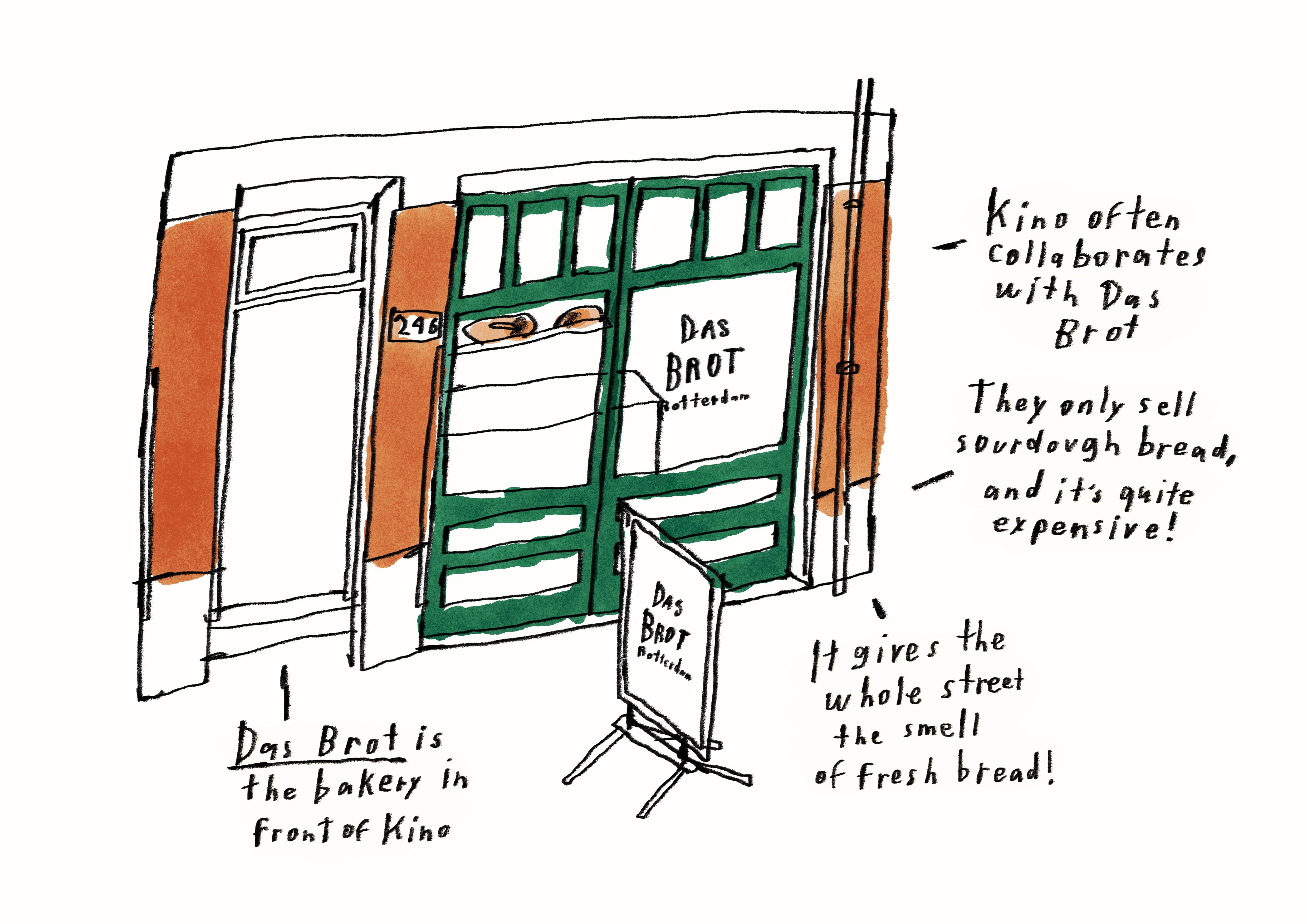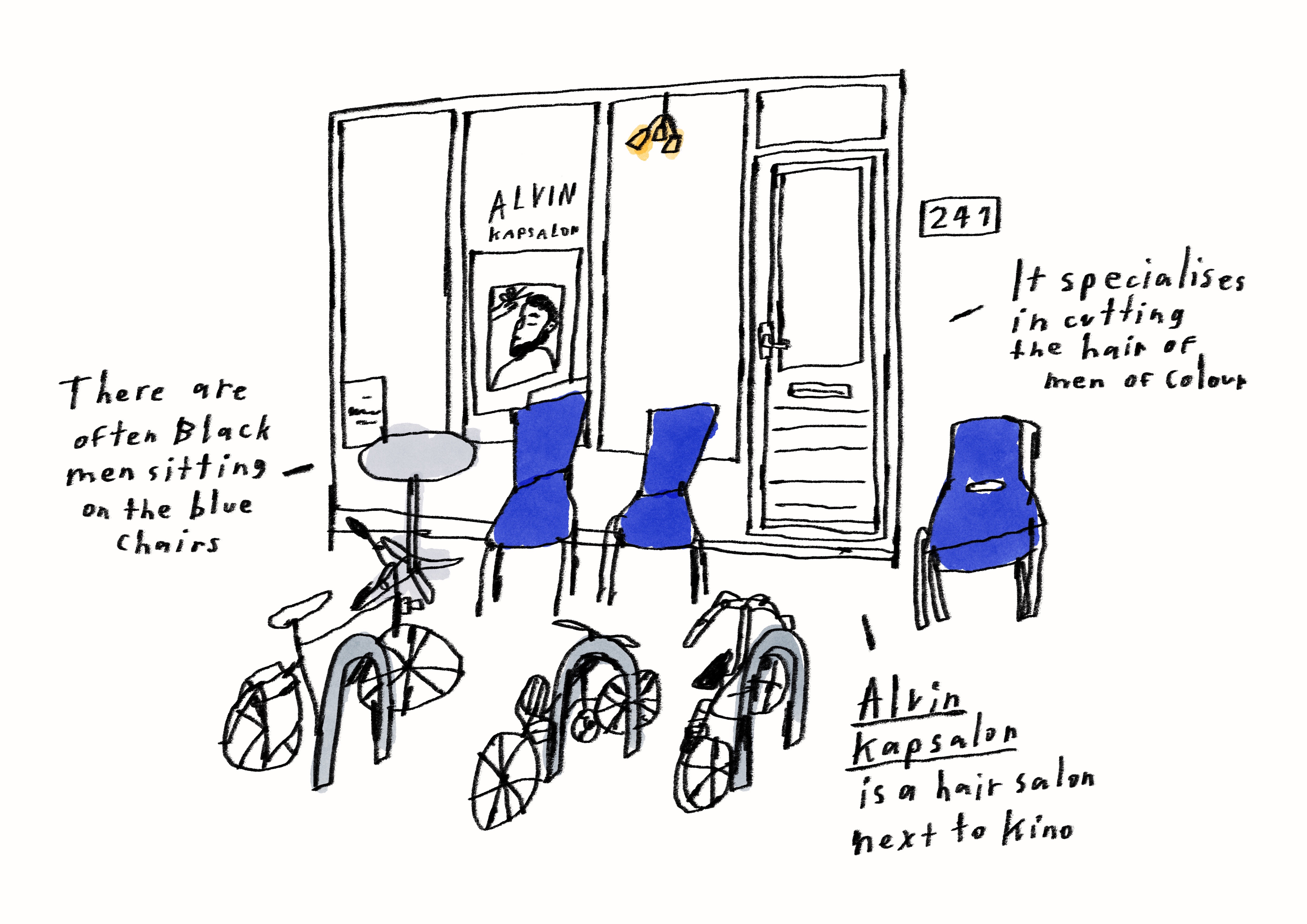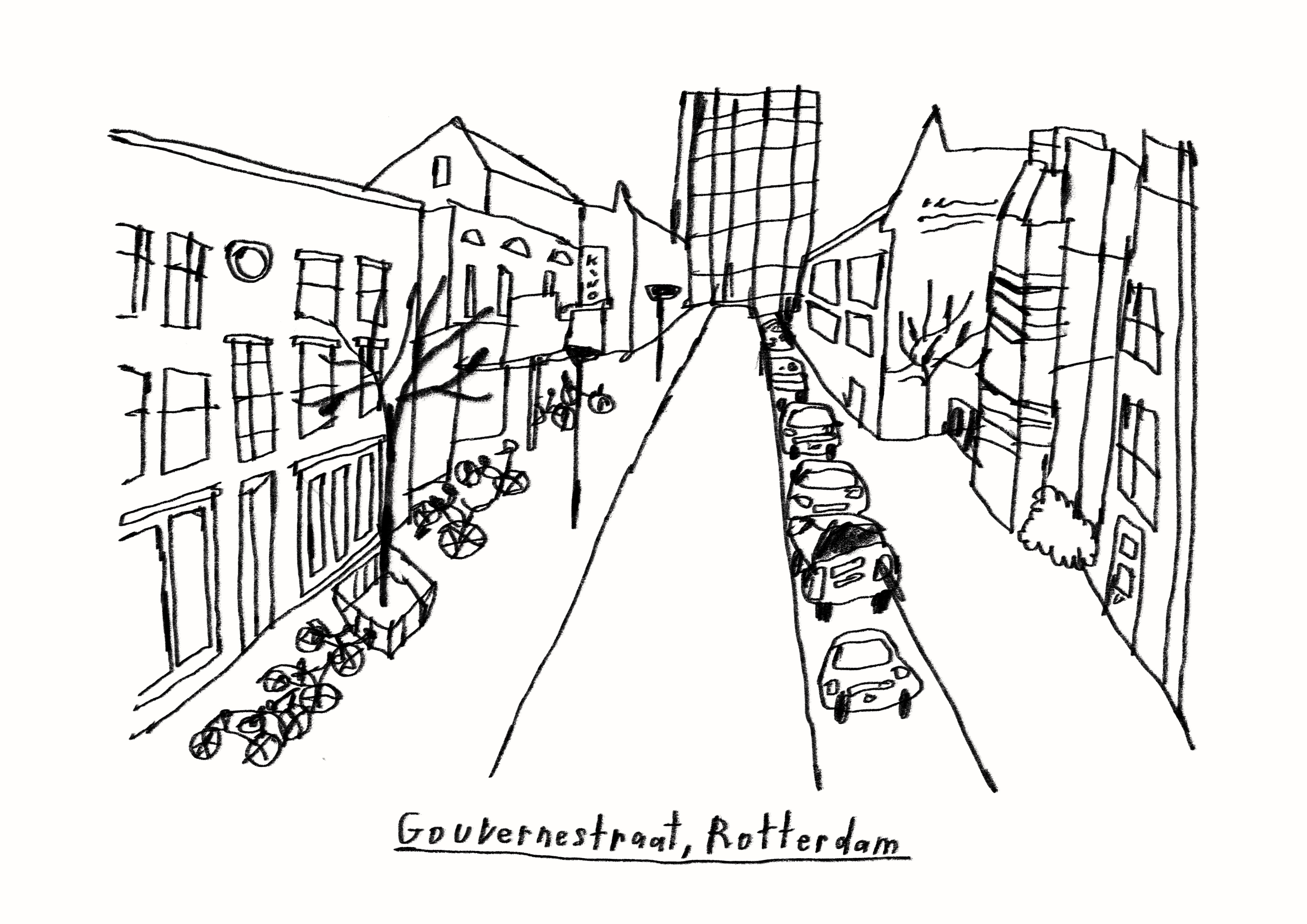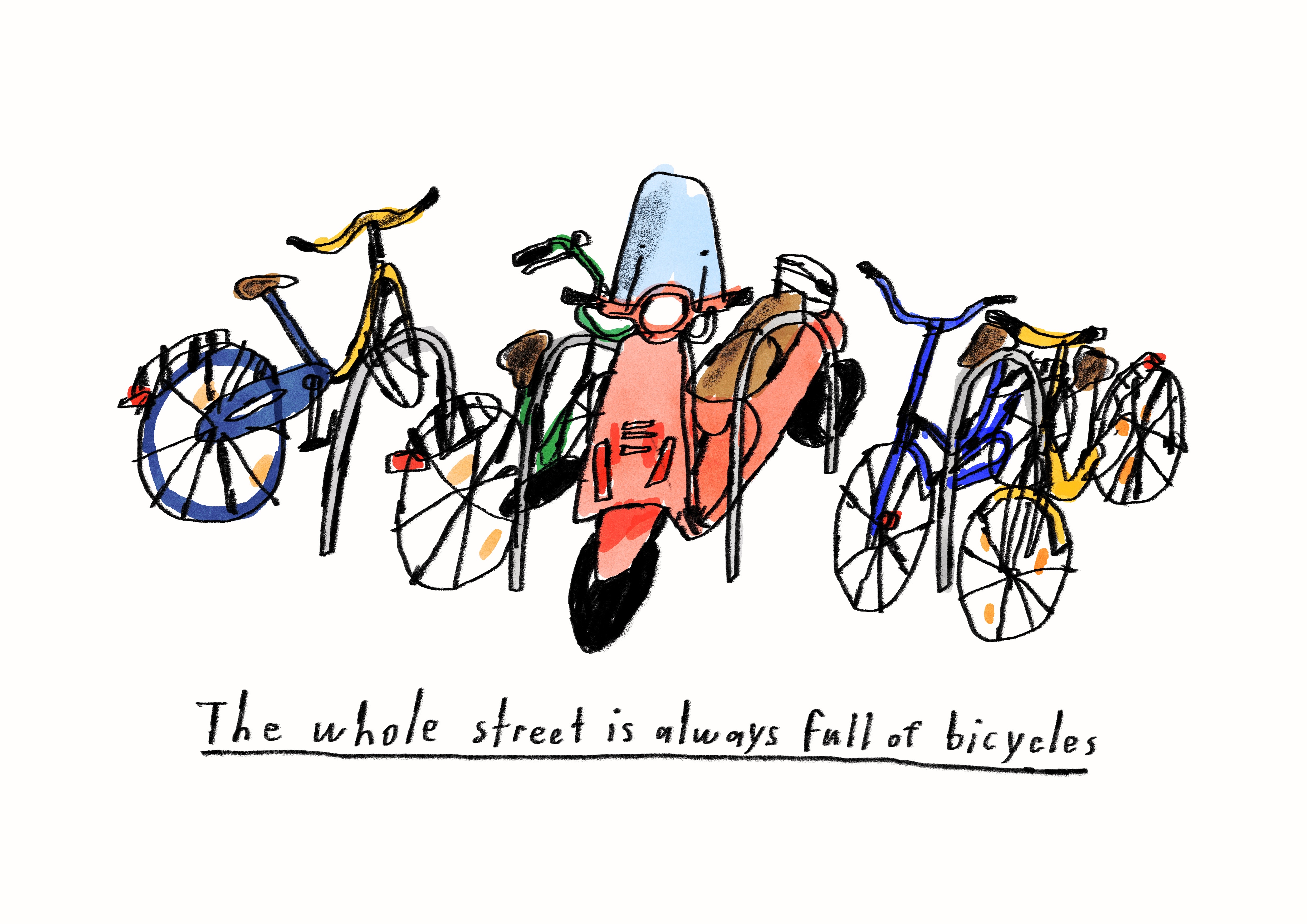Honey and I decided to work together because we share a passion for film and cinemas. We decided to focus on Kino, an arthouse cinema we both visit regularly. We are focusing on Kino, but using Pathé as a comparison to gain more insights.
comparison notes of Kino vs. Pathé
Kino presents itself as a cinema that only shows quality cinema. They show a lot of arthouse films, but also some blockbusters, like Star Wars, Lord of the Rings and Joker. They show blockbusters that can be seen as cinematic, and there has to be a certain quality.
There is a sense of trust that Kino has in its audience. You can practically walk in and go watch a film for free, because they don't check tickets very often. In Pathé this is different, you have to go through a routine: buying the ticket, showing the ticket at the entrance, buying snacks, and showing the ticket at the door of the screening hall. Pathé is very regulated, while Kino is not. In Pathé the employees are mostly teenagers or students wearing uniforms. In Kino employees seem like they are cinephiles themselves and wear no uniform.
Pathé Schouwburgplein is an enormous building taking over the whole square. Kino is a bit hidden in an alley, you have to know it exists to find it. Pathé feels like a shopping mall while Kino is a living room.
Pathé relies heavily on the snacks they sell. They sell anything you can think of, popcorn, ice cream, Starbucks coffee, sushi, etc. In Kino, they don't snell food or drinks that will make noise or a mess. They only sell snacks like cannoli and they serve all drinks in glasses.
In Pathé there is often popcorn on the floor and some people take their shoes of and put their feet on the chair in front of them, in Kino this behaviour does not happen. There is more respect towards the cinema.
Illustration of the outside of Kino and the movement that happens there. The outside of Kino is lit with dim lights. People drink and hang out in front of the entrance.
Map of where Kino and Pathé are centered in Rotterdam.
Things we want to investigate:
- who is Kino's choses audience, what do those people look like?
- what is the effect of Kino's location of the cinema? what is Kino's effect on its neighbourhood?
- the price of tickets
- is the place designed for groups or people on their own? Do people visit on their own?
Research questions:
How does the design of this space perpetuate old beliefs of social/economic class?
How does Kino's interior and exterior design influence the audience that visits?
When I walk into Kino, I immediately feel at home. That is because I have been there countless times, and also because of the interior. The lights are dim, there are cosy benches and there are big houseplants everywhere. Because of this it feels more like a personal setting. Honey brought up the idea that Kino feels like a living room to us, but asked the question; "would everyone feel at home here?" Dim lights often feel more expensive, why is that?
Kino has a very elaborate and beautifully designed bar. It is full of expensive alcohol and glasses. It is the centrepiece of the cinema. People don't only watch films here, but also discuss afterwards with a glass of wine or a cup of tea with fresh mint and honey. There is a sense of calm. Nothing is rushed in this cinema. In Pathé it's all about getting your snacks as fast as possible, and leaving the cinema as soon as the first credit roll. In Kino you get your ticket, take your time to order and
take a seat in the hall and wait for the film to start.
It is common that in arthouse cinemas, people visit alone. It isn't frowned upon. However Kino is designed with a social sitting in mind, there are booths like this one where you can chat with your friends.
The entrance of Kino is a place where a lot of people hang out and chat with their friends. It is often busier outside than inside, probably also because of covid restrictions.
You could say that Kino is wheelchair friendly in some ways. there is a wheelchair entrance, but the doors to the screening halls are very heavy and often closed. I have never seen someone in a wheelchair there.
These are cinema tickets from my parents in '96 and '97, the Kino building used to be Lantarenvenster and my parents visited it regularly. They told me that the interior wasn't as cosy as it is now. The used TL lights instead of the cosy lamps Kino has now.
There are a lot of houseplants in Kino. They give the feel of a living room. For some reason they also make the space feel more expensive. There is something about big houseplants that give an exclusive and luxurious feel.




We did some research into the area around kino, and I made illustrations after discussing with Honey. Kino is located in de Gouvernestraat, which crosses with Nieuwe Binnenweg. Kino is a bit hidden in this street, if you don't know about it, you might not notice it. The Gouvernestraat is a very diverse neighbourhood, but what's interesting is that Kino's audience is mostly white.
What are the effects of Kino on the mostly residential neighbourhood?
- Noise: Kino visitors are often hanging out in front of the entrance, they discuss the films they just saw.
- Lots of bicycles. Sometimes there is no space left in the bicycle racks. A lot of Kino visitors are able bodied and come by bike.
- A lot of people come to this area for Kino, this can be a good effect one the businesses that are close to it.
The businesses around Kino:
Final map: Honey and I decided to combine all the research we did into an interactive floor plan like map of Kino. I made the illustration of the map and together we decided which aspects we wanted to highlight. I added little figures of people on the map, to show how people move throughout the space. You can also see how people take distance in the screening rooms.
When you click on a highlighted text, you are directed to a new page with info about that particular setting. This includes info about social class and visual research. We have focused on illustration, and the whole map is illustrated.
For example, when you click on "benches," you will go to a page with illustrations and research into the idea of Kino feeling like a living room.
Honey and I had a long call and came to a new observation. The programmers who work at Kino are all white, and they are the ones who decide what films are shown. We never thought about it before but the films that are shown determine the audience Kino attracts. It seems obvious now that Kino's audience is mainly white, as most of the films shown have a 90% white cast. Apart from that, Kino also mainly shows films by white male directors. It is arguable if Kino consciously makes this decision, as this is a wider problem of the film industry. For us this whole project was at its core, deconstructing the bias we have about our favourite cinema. We LOVE kino, and we always "feel so at home." During this project we realised that Kino may feel like a home for us, but not for everyone. As a white person, I never realised there was a lack of people of colour in Kino's film programme, I did not notice this before and did not see it as a problem. Now I will go to Kino with new critical insights.